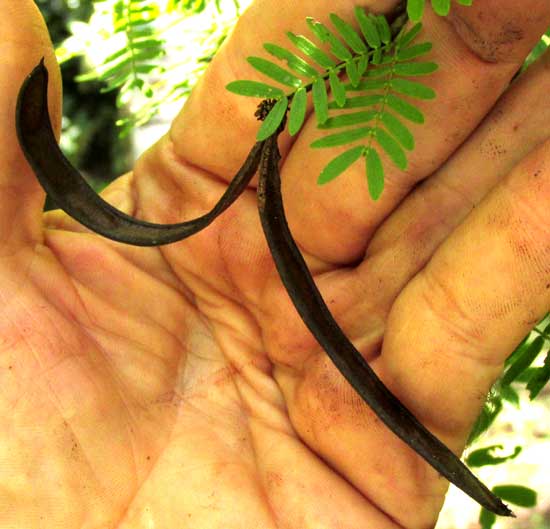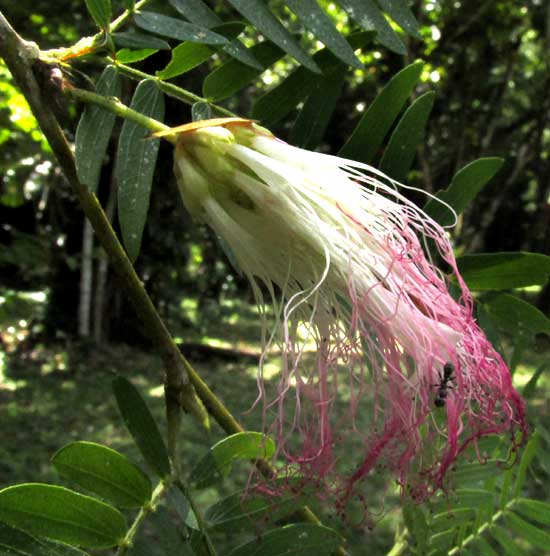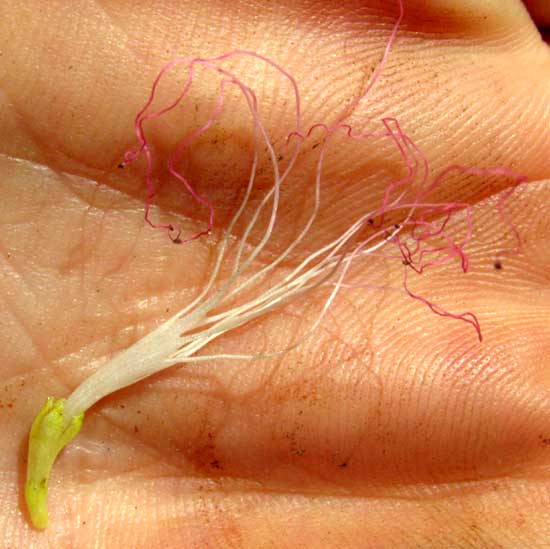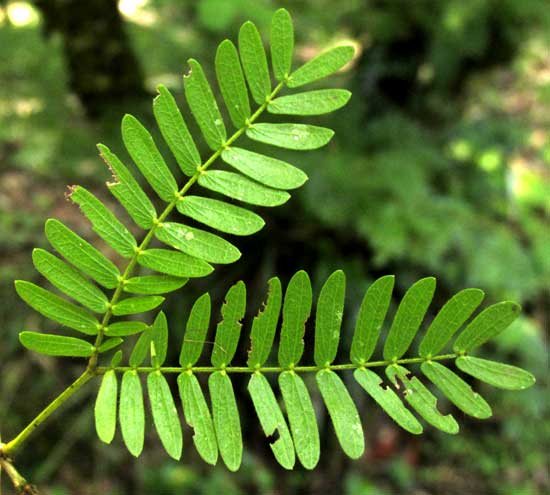Excerpts from Jim Conrad's
Naturalist Newsletter
from the November 16, 2018 Newsletter with notes from a camping trip into the Petén District of northern GUATEMALA
PINK POWDERPUFF
Last month on October 1 when I set my tent up in the campground of Rosario National Park, on the east side of Sayaxché in northern Guatemala's Petén district, a tree about ten feet tall (3m) bore just two or three clusters of pinkish flowers, one cluster shown below:

With such twice-pinnately compound leaves and a powderpuff-like flowering structure, or inflorescence, it's clearly a member of the huge Bean Family. And within that family it belongs to the subfamily or tribe to which acacias, mimosas, albizias and the like belong. The tree bore the remains of a single legume-type fruit, which already had matured, split open, and dropped its beans, as shown below:

That picture shows the legume's two split-apart sides. Each side bears along its margin strong nerves of the type seen on legumes that, at a certain stage of maturity and dryness, suddenly snap apart, slinging their beans fair distances from the mother tree. Such explosive fruits occasionally are encountered in the Bean Family.
The pinkish powderpuff item in the first picture isn't a flower itself, but rather a cluster of flowers. Below, a side view of the cluster shows individual flowers issuing numerous stamens:

Despite daily rains at that time, I never saw the stamens stiffly sticking out the way they're shown in most pictures. Maybe the rains were beating them down, causing them to tangle? You can see that the stamens' slender filaments are white at their bases, turning pink only toward their tips. If you remove just one flower, the blossom's structure becomes easier to interpret, and you can see that the pollen-producing anthers are tiny compared to the filaments, as seen below:

Many Bean Family trees and bushes share features very similar to what the pictures show, and often it's hard to figure out which species you have. However, this particular tree's leaves were compound in an unusual way, as shown below:

That's one compound leaf, and the unusual feature is that the leaf's first division produces only two secondary structures -- only two pinnae. Then these two pinnae are divided the usual way into numerous tertiary subdivisions, or pinnules.
These features lead us to CALLIANDRA SURINAMENSIS, maybe best known in English as the Pink Powderpuff, though other trees with similarly clustered flowers bearing many long, pink stamens share that name. It's native to northern South America but much planted and sometimes escaped in numerouis tropical countries because of its prettiness. Probably it was planted in the campground.
I read that the species can flower year round, a feature appreciated by many pollinators.